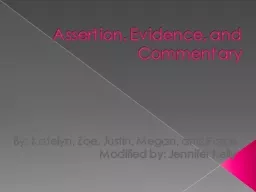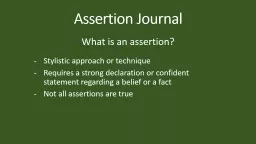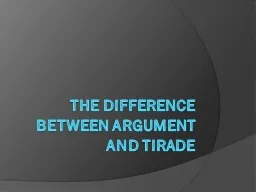PPT-The use of Assertion Reason Questions to promote higher ord
Author : test | Published Date : 2017-03-20
Dr Rosalind Brownlow University of York Ted Hewitt Devi Nanen Mike Parker amp Cecilia Lowe rosbrownlowyorkacuk rosbrownlow GEN challenge the traditional methods
Presentation Embed Code
Download Presentation
Download Presentation The PPT/PDF document "The use of Assertion Reason Questions to..." is the property of its rightful owner. Permission is granted to download and print the materials on this website for personal, non-commercial use only, and to display it on your personal computer provided you do not modify the materials and that you retain all copyright notices contained in the materials. By downloading content from our website, you accept the terms of this agreement.
The use of Assertion Reason Questions to promote higher ord: Transcript
Download Rules Of Document
"The use of Assertion Reason Questions to promote higher ord"The content belongs to its owner. You may download and print it for personal use, without modification, and keep all copyright notices. By downloading, you agree to these terms.
Related Documents














